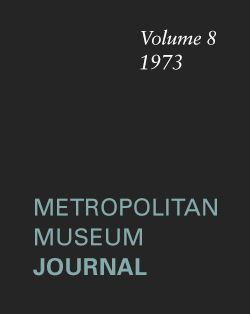This long-anticipated work is the final volume of the CTMMA series and completes the publication of all the cuneiform-inscribed tablets and inscriptions (excluding those on sculptures, reliefs, and seals) in the collection of The Metropolitan Museum of Art. Published are 183 texts that include 154 cuneiform tablets and tablet fragments, one inscribed clay bulla, fourteen clay cylinders, five clay prisms, and four stone inscriptions. Economic and Administrative texts are from Sippar, Babylon, Kish, Dilbat, Nippur, Drehem, Uruk, and other sites in Babylonia and ancient Iran. First millennium B.C. royal inscriptions date to the reigns of Ashurnasirpal, Sennacherib, Esarhaddon, Ashurbanipal, Nebuchadnezzar, and Nabonidus. The texts are organized in five parts: Part One contains Neo- and Late Babylonian economic and administrative tablets and fragments from the archives of the Ebabbar temple in Sippar. Part Two includes Neo- and Late Babylonian period economic and administrative tablets from Babylonia and other sites. Part Three includes Late Babylonian administrative and archival tablets from Babylon. Part Four contains royal and non-royal brick, stone, bulla, cylinder, and prism inscriptions from the second and ¬first millennia B.C. A final section (Part Five) includes three proto-cuneiform archaic tablets and two Ur III administrative tablets. Professors Ira Spar (Professor of Ancient Studies at Ramapo College of New Jersey and Research Assyriologist at The Metropolitan Museum of Art) and Michael Jursa (University Professor of Assyriology, University of Vienna) were assisted by a team of distinguished scholars and conservators who provided valuable insights into the preparation of scholarly editions of the texts, seal impressions, and technical analysis published in this volume. Ira Spar hand copied and made facsimile drawings of the Museum’s texts with the assistance of Charles H. Wood. Jo Ann Wood-Brown and Charles H. Wood prepared drawings of seal impressions and divine symbols. This four-volume series of publications reaffirms the Museum’s ongoing commitment to promoting wider knowledge of ancient Near Eastern civilizations. Volume one documents 120 tablets, cones, and bricks from the third and second millennia B .C. Volume two publishes 106 religious, scientific, scholastic, and literary texts written in Akkadian and Sumerian that primarily date to the later part of the ¬first millennium B.C. Volume three includes 164 private archival texts and fragments from the first millennium B .C.





